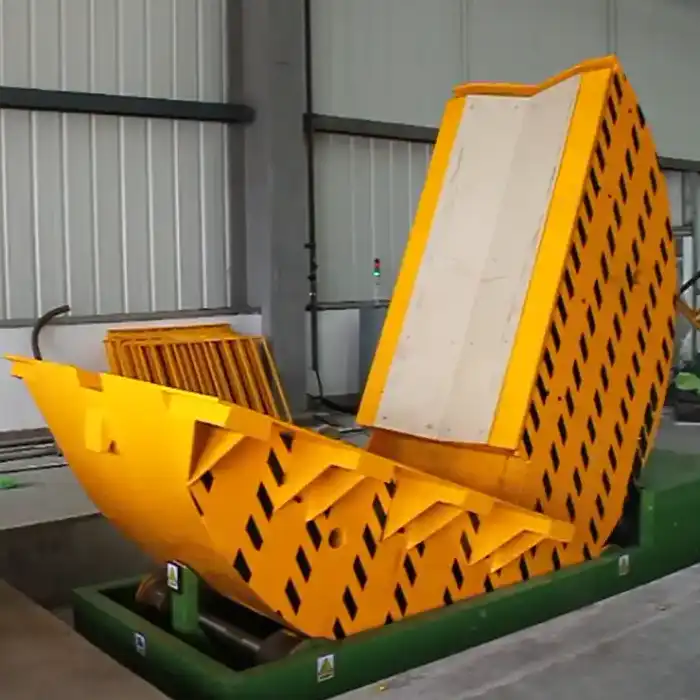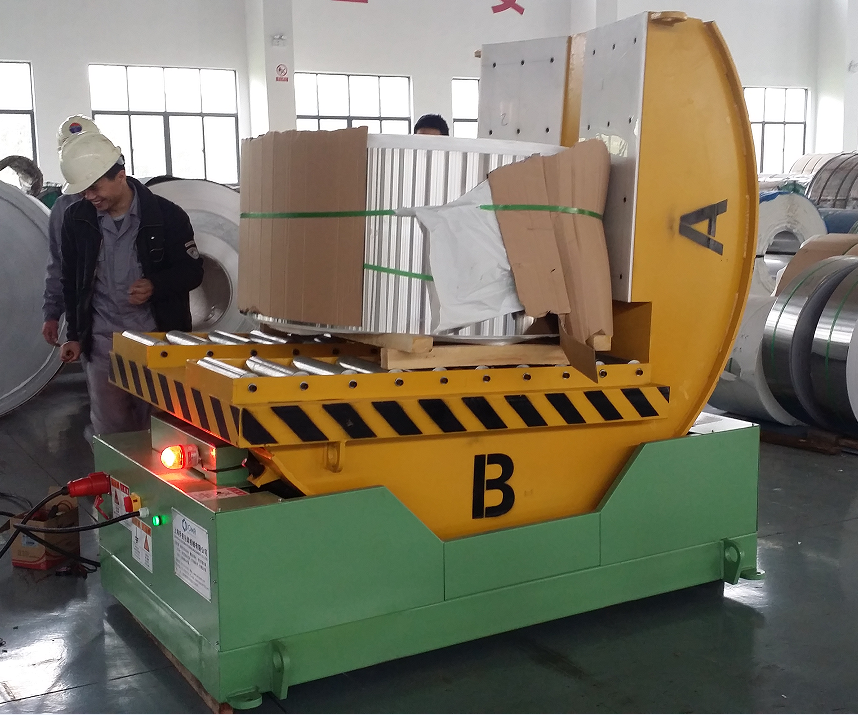Understanding Coil Tilters and Upenders: Essential Equipment for Material Handling
Efficiently and safely manipulating large, heavy coils of materials like steel, aluminum, or paper is a critical requirement in many industrial operations. Coil tilters and coil upenders are specialized material handling machines designed specifically for this purpose, optimizing workflow and enhancing workplace safety. While sometimes used interchangeably, understanding their distinct functions is key to selecting the right equipment for your needs.

What is a Coil Tilter?
A coil tilter is robust equipment engineered to pivot a coil, typically from its horizontal (eye-to-sky) axis to a vertical (eye-to-wall) axis, or vice-versa, often up to a 90-degree angle. This reorientation facilitates easier handling, storage, transportation, or prepares the coil for subsequent processing steps like slitting or stamping. Key components generally include a sturdy base, a load-bearing platform or cradle designed to securely hold the coil, and a drive mechanism (often hydraulic or electromechanical) that powers the tilting motion.
What is a Coil Upender?
Often functionally similar to a tilter, a coil upender is specifically designed to rotate a coil, typically 90 degrees or sometimes 180 degrees, changing its orientation on the same plane or shifting its axis entirely. For instance, an upender might take a coil lying flat (eye-to-sky) and stand it on its side (eye-to-wall). This is essential for tasks like loading coils onto machinery mandrels, preparing them for vertical storage, or changing their orientation for shipping. Like tilters, upenders feature a base, a support structure, and a reliable rotating mechanism.
Coil Tilter vs. Coil Upender: Key Distinctions
While the terms 'tilter' and 'upender' are sometimes used interchangeably, understanding their primary intended function helps clarify selection:
- Primary Motion: Tilters primarily pivot the coil around a horizontal axis, changing its vertical/horizontal orientation. Upenders primarily rotate the coil, often changing which surface faces up or down, or preparing it for axis shifts.
- Common Angle: Tilters commonly operate up to 90 degrees. Upenders frequently perform 90-degree or 180-degree rotations.
- Application Focus: Tilting is often for preparing coils for horizontal feed processes or palletizing. Upending is crucial for mandrel loading, vertical slot storage, or specific processing line entries.
Common Industrial Applications
Both coil tilters and upenders are indispensable in various sectors:
- Steel and Aluminum Service Centers: Handling raw coils for slitting, cutting-to-length, and distribution.
- Metal Stamping and Fabrication: Positioning coils for feeding presses and other fabrication machinery.
- Paper Mills: Managing large paper rolls during production and finishing.
- Wire and Cable Manufacturing: Handling spools and reels.
- Automotive Industry: Supplying coils to stamping lines.
Prioritizing Safety in Coil Handling
Handling heavy coils presents inherent risks. Modern coil tilters and upenders incorporate critical safety features:
- Physical Guarding: Barriers or cages to prevent personnel from entering the operational area during movement.
- Emergency Stop Buttons: Strategically placed E-stops to halt machine operation instantly.
- Limit Switches: Prevent over-travel of tilting or rotating mechanisms.
- Load Holding Valves (Hydraulic Systems): Prevent accidental lowering of the load in case of hydraulic pressure loss.
- Stable Base Design: Ensures the machine remains stable even under maximum load.
- Operator Training: Proper training on safe operating procedures, load limits, and emergency protocols is paramount. For comprehensive guidance, refer to resources like OSHA guidelines on materials handling.
Selecting the Right Coil Handling Equipment
Choosing the appropriate coil tilter or upender involves considering several factors:
- Load Capacity: Must exceed the maximum weight of the coils to be handled.
- Coil Dimensions: Machine must accommodate the minimum/maximum diameter and width of the coils.
- Required Orientation Change: The specific tilt angle (e.g., 90°) or rotation (90°, 180°) needed for the process.
- Cycle Time: How quickly the machine needs to perform the tilting/rotating action.
- Power Source: Hydraulic, electromechanical, or pneumatic options.
- Level of Automation: Manual control, semi-automatic, or fully integrated into an automated line.
- Footprint and Installation: Available floor space and integration requirements.
- Maintenance Requirements: Ease of access for routine checks and service.
- Manufacturer Reputation and Support: Reliability and availability of parts/service.

steel coil upender Enhancing Efficiency and Safety
Coil tilters and upenders represent a significant investment, but one that pays dividends in operational efficiency, reduced product damage, and, most importantly, enhanced worker safety. By carefully evaluating application needs and selecting the right equipment, facilities can streamline their coil handling processes and improve their overall productivity.
